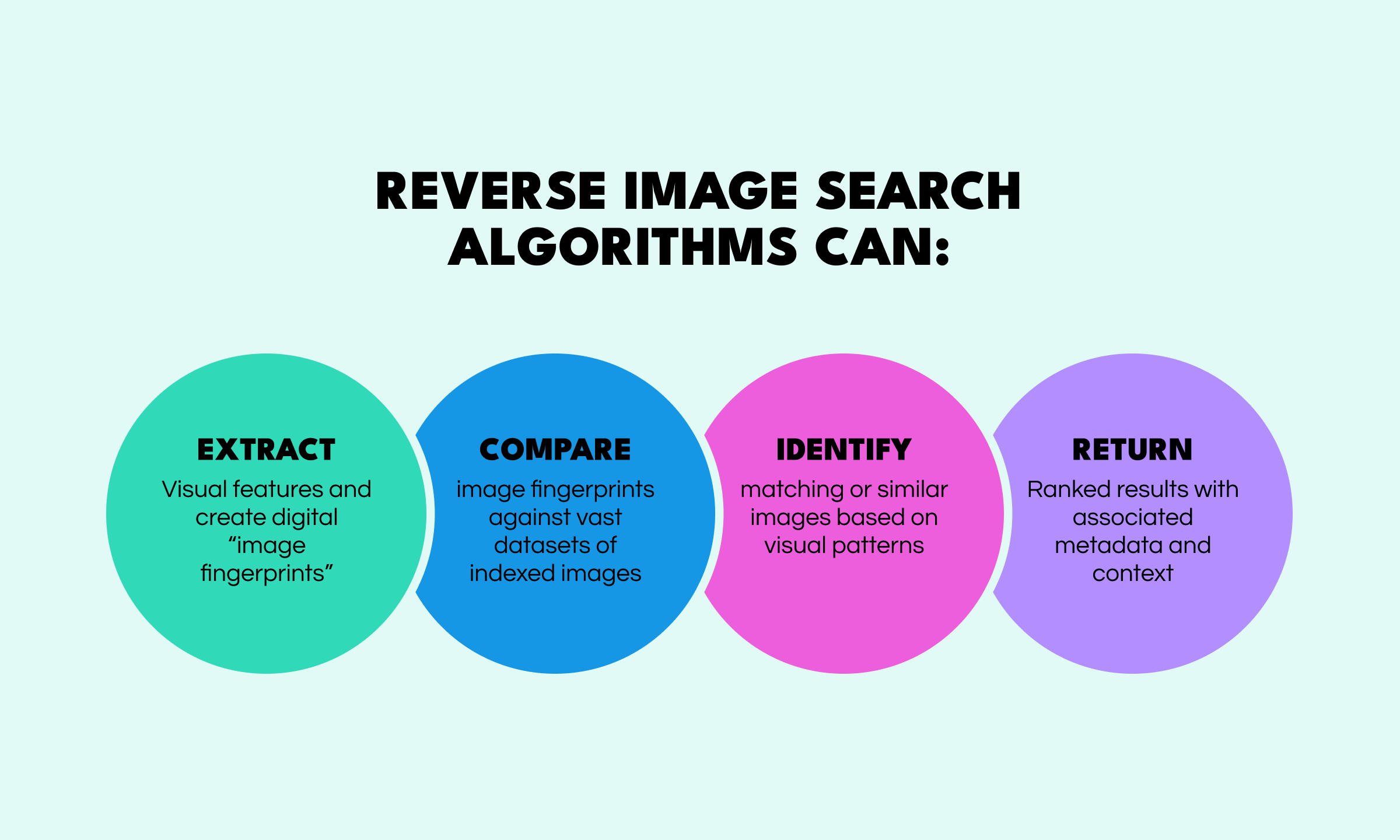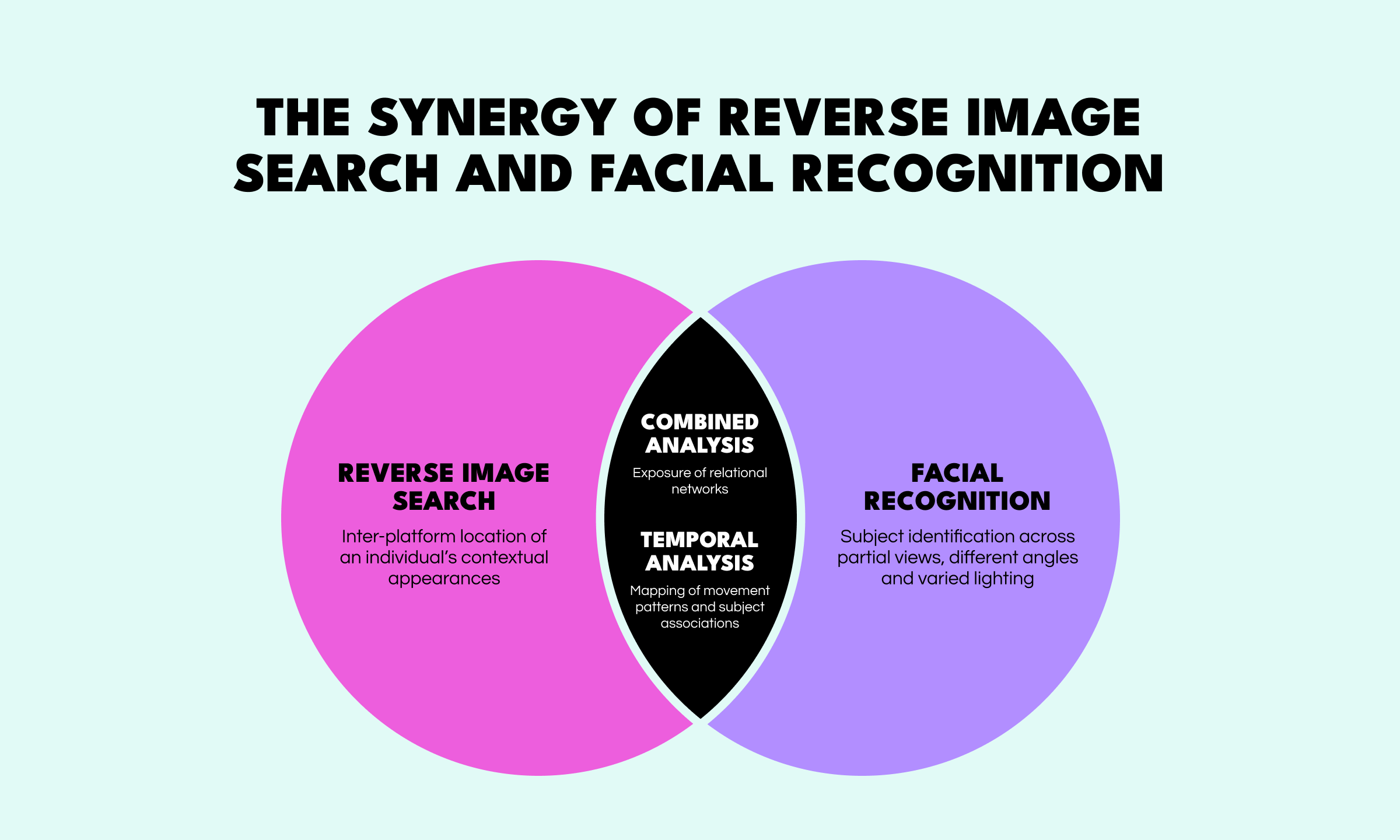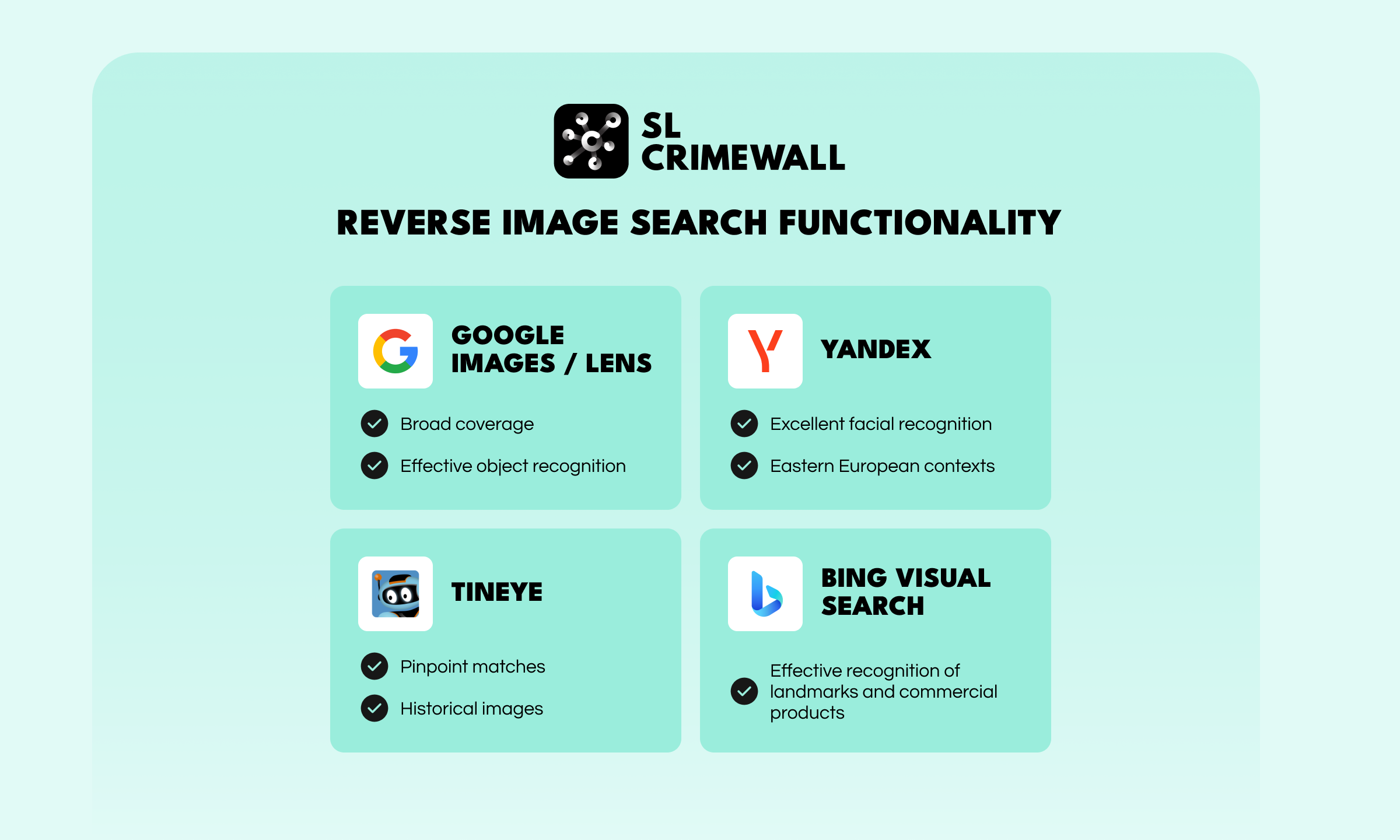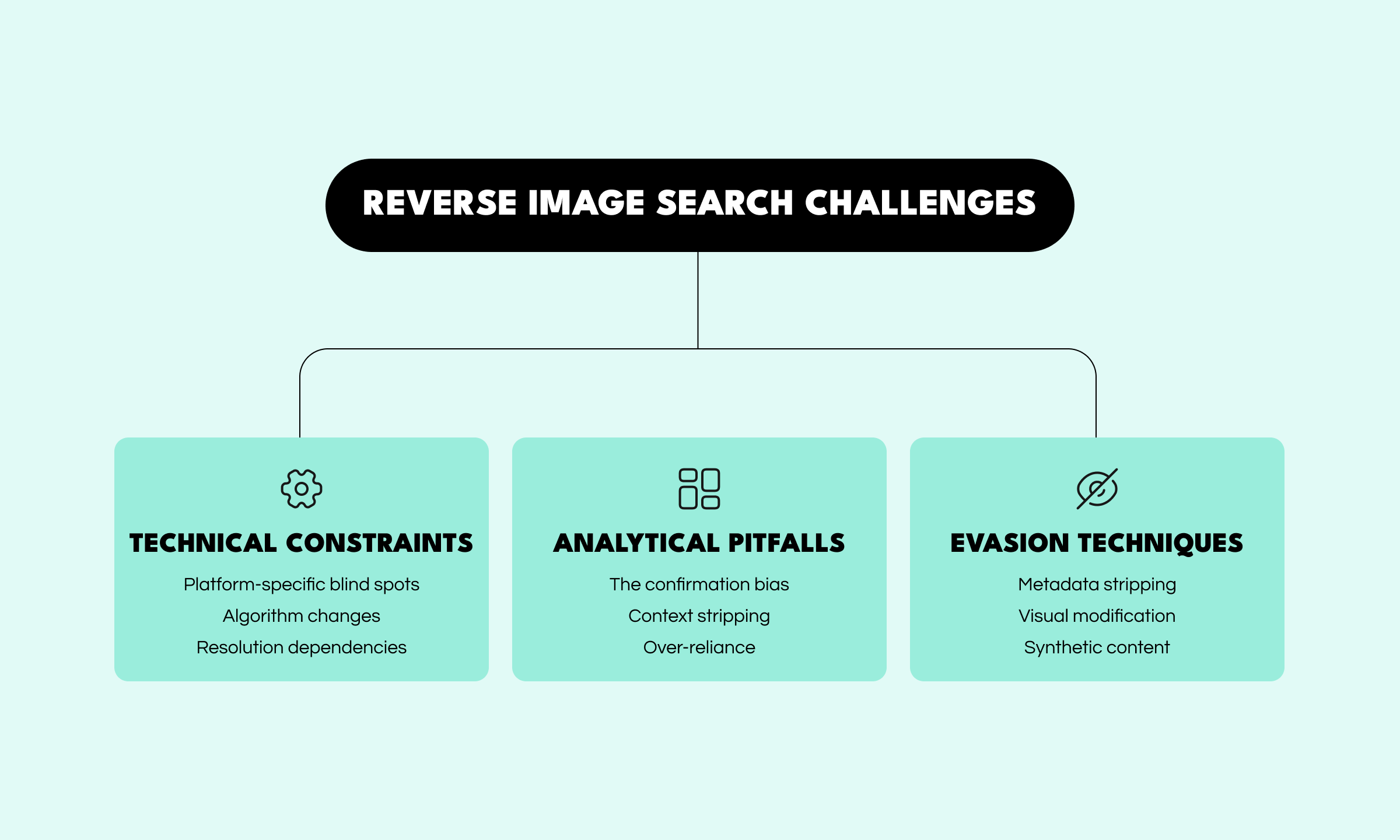Reverse Image Search: A Proven Standard-Practice OSINT Technique


In the dynamic landscape of open-source intelligence, investigators are continually searching for reliable methods that deliver actionable results. Among these, reverse image search has emerged as a cornerstone OSINT technique, employed by intelligence professionals, law enforcement agencies, investigative journalists, and security researchers worldwide.
Social Links have led the way in reverse image search product integration, so today our Center of Excellence is taking a closer look at this essential and widely adopted OSINT technique, examining its applications, limitations, and future evolution through the lens of proven case studies.
Just as standard searches return results from textual queries, reverse image search is the use of an image as a search input to discover related content across the internet. While traditional text-based searches rely on keywords as identifiers, reverse image search employs visual analysis to find identical or similar images, as well as their origins, modifications, and context. Opening rich avenues of investigation, this approach can transform visual data into leads that are inaccessible to conventional methods — much like how broader methodologies described in the Comprehensive guide to OSINT methods expand investigative reach beyond single-source techniques.
The technical underpinnings of reverse image search involve sophisticated algorithms for the extraction, comparison, identification, and retrieval of image data.

With their full-cycle investigation platform, SL Crimewall, Social Links has pioneered the integration of these capabilities into a unified investigative environment, allowing users to seamlessly incorporate reverse image search into their broader analytical workflows without having to jump between a range of disparate image investigation tools.
Modern OSINT platforms have evolved to incorporate reverse image search capabilities within centralized workspaces. For example, SL Crimewall boasts a multi-platform reverse image search functionality that aggregates results from multiple search engines including Google, Yandex, and other specialized services, providing investigators with a single interface for comprehensive visual intelligence gathering.
This integrated approach offers clear, key advantages to this integrated approach, including:
This consolidated, platform-based approach transforms reverse image search from an ad hoc OSINT technique into a systematized component of the intelligence cycle, ensuring consistent application and comprehensive coverage.

When deploying these complementary technologies, investigators must:
SL Crimewall is among the first solutions to responsibly integrate these technologies, providing investigators with powerful capabilities while maintaining necessary guardrails for their ethical application.
One testament to the efficacy of reverse image search in cybercrime investigations lies in the work of the prominent blockchain investigator, ZachXBT. In a notable case involving a Canadian teenager with links to major SIM swap attacks and NFT Twitter account hacks, ZachXBT leveraged reverse image search techniques to remarkable effect.
During the investigation of Cameron Redman, an individual linked to approximately $37 million in stolen assets between 2020 and 2022, ZachXBT came across a selfie posted on Instagram. Through careful examination of the image, a "Sunway Dental" sign was made out in the background details. Through reverse image search and supplementary geolocation techniques, ZachXBT was able to place this dental office in Mississauga, Ontario—notably close to the police station where Redman had been arrested.
This case illustrates how, when combined with careful visual analysis, reverse image search can transform seemingly innocuous social media content into definitive location evidence, ultimately strengthening the overall case. A similar workflow is often seen in OSINT investigations centered on identity correlation and digital footprint analysis, as explored in What is OSINT in 2025. The capabilities demonstrated in this individual investigation are now systematized and integrated into Social Links' platforms, allowing investigators to apply similar methodologies at scale.
Having incorporated reverse image search as a fundamental aspect of their investigative methodology, the pioneering OSINT organization, Bellingcat, have introduced an approach to the discipline that epitomizes best practices for intelligence specialists. This approach entails:
A Multi-platform Search Strategy: Bellingcat investigators routinely employ multiple reverse image search engines (Google Images, Yandex, TinEye) in parallel, recognizing that each platform may return different results based on their unique indexing algorithms and database coverage.
This methodological rigor has enabled Bellingcat to achieve remarkable investigative outcomes in cases ranging from conflict zone verification to transnational crime investigations. Incorporating these multi-platform, verification-focused principles into its design, SL Crimewall streamlines what would otherwise be a manual, time-intensive process. A similar validation workflow is also common in structured OSINT methodologies, including those used for criminal investigations, which are explored in depth in OSINT in Criminal Investigations.
The Organized Crime and Corruption Reporting Project (OCCRP) incorporates reverse image search within its broader investigative framework. While not always detailed in public reports, OCCRP researchers systematically employ the OSINT technique for:
By integrating reverse image search with other investigative techniques, OCCRP has developed a comprehensive methodology that maximizes the intelligence value of visual content encountered during investigative work. This integrated approach mirrors the philosophy behind Social Links' solution development, where the consolidation of multiple intelligence streams into unified analytical workflows is a driving objective. For investigators who want to see how this approach fits into broader cross-platform analysis, including attribution through aliases, infrastructure, and behavioral mapping, we recommend Advanced Deanonymization Techniques.
There are many reverse image search tools available, so a discerning approach to platform selection is needed to maximize results. Established workhorses favored by experienced OSINT specialists include:
Google Images / Google Lens: While recent interface changes have altered its functionality, Google’s visual search engine provides broad coverage and excellent object recognition.
Yandex: The engine of the Russian tech giant excels at facial recognition and the identification of objects in Eastern European contexts, making it extremely valuable for investigations connected to those regions.
TinEye: This tool specializes in pinpointing matches and historical appearances of images, ideal for determining the original source of visual content.
Bing Visual Search: Microsoft’s search engine offers strong recognition of landmarks and commercial products, complementing the capabilities of other platforms.
At Social Links, we address this challenge directly by incorporating multiple search engines within SL Crimewall, allowing investigators to leverage the strengths of each platform without manual resubmission or context switching. This consolidation mirrors broader trends in unified investigative tooling described in Inside the modern OSINT toolkit, where multi-source automation significantly enhances analytical depth.

Beyond basic implementation, advanced reverse image search practitioners employ sophisticated techniques to enhance results, including:
Many of these advanced techniques are automated within Social Links platforms, allowing investigators to apply sophisticated methodologies without specialized technical knowledge. We pride ourselves on being in the vanguard of this shift towards the democratization of advanced reverse image search tools, making these powerful techniques accessible to a broader range of security professionals.
Despite its proven effectiveness, reverse image search presents several challenges that OSINT practitioners will inevitably have to negotiate:
While boasting a range of benefits, reverse image search tools also have their limitations, including:
Social Links addresses these challenges through its multi-platform approach. By providing comprehensive coverage across multiple search engines and boasting integration methods that are continually updated, the limitations that plague many stand-alone solutions are overcome.

Analytical Pitfalls
Even when conducting searches with technical competence, investigators must remain cognizant of various challenges that can lead to analytical errors:
With reverse image search becoming ever more established as a standard investigative technique, investigation subjects have developed corresponding countermeasures:
These challenges underscore the importance of integrating reverse image search within a comprehensive OSINT methodology rather than treating it as a The Takeaway
Reverse image search has established itself as a standard-practice OSINT technique across the OSINT community—one validated through successful applications by organizations like Bellingcat and OCCRP, as well as individual practitioners such as ZachXBT and Henk van Ess. The integration of reverse image search into comprehensive intelligence platforms such as SL Crimewall represents the growing maturity of what was once a specialized OSINT technique into a fundamental component of the modern investigator's toolkit.
By aggregating multiple reverse image search engines into a unified interface and incorporating them within broader analytical workflows, Social Links has significantly advanced the accessibility and effectiveness of technique methodologies for security professionals. This platform-based approach addresses many of the traditional challenges associated with reverse image search, from platform-specific limitations to workflow inefficiencies.
As artificial intelligence and cross-modal analysis enhance the precision and scope of reverse image search, the discipline’s evolution promises increasingly greater value moving forward. However, these technical advances must be accompanied by thoughtful consideration of their legal and ethical implications, to ensure they are implemented responsibly.
For today's intelligence professionals, security researchers, and investigative journalists, mastery of reverse image search methodology—including its capabilities, limitations, and best practices—represents not merely a useful technical skill, but an essential competency for effective open-source investigations in an increasingly visual digital landscape. Platforms that streamline and enhance these capabilities, such as SL Crimewall, will play a crucial role in enabling these professionals to overcome the evolving challenges of modern investigations.
standalone approach. Social Links solutions address this challenge by incorporating reverse image search within a broader analytical framework that includes multiple verification methods and intelligence sources.
As visual content continues to proliferate across digital spaces, reverse image search methodology is bound to evolve accordingly. Several emerging trends are expected to shape this evolution:
Artificial intelligence is transforming reverse image search capabilities through:
Social Links continues to lead industry innovation by integrating these AI advancements into their platforms, ensuring investigators have access to next-generation capabilities as and when they emerge.
Next-generation reverse image search will increasingly integrate multiple data types, such as:
This holistic approach will provide investigators with richer contextual understanding rather than isolated image matches. SL Crimewall already implements elements of this cross-modal approach, positioning the platform at the forefront of integrated intelligence analysis.
As AI-generated images become ever more sophisticated, reverse image search tools are evolving to:
These capabilities will be crucial for ensuring the reliability of image-based intelligence in an era of increasingly convincing synthetic media.
Reverse image search has established itself as a standard-practice OSINT technique across the OSINT community—one validated through successful applications by organizations like Bellingcat and OCCRP, as well as individual practitioners such as ZachXBT . The integration of reverse image search into comprehensive intelligence platforms such as SL Crimewall represents the growing maturity of what was once a specialized OSINT technique into a fundamental component of the modern investigator's toolkit.
By aggregating multiple reverse image search engines into a unified interface and incorporating them within broader analytical workflows, Social Links has significantly advanced the accessibility and effectiveness of technique methodologies for security professionals. This platform-based approach addresses many of the traditional challenges associated with reverse image search, from platform-specific limitations to workflow inefficiencies.
As artificial intelligence and cross-modal analysis enhance the precision and scope of reverse image search, the discipline’s evolution promises increasingly greater value moving forward. However, these technical advances must be accompanied by thoughtful consideration of their legal and ethical implications, to ensure they are implemented responsibly.
For today's intelligence professionals, security researchers, and investigative journalists, mastery of reverse image search methodology—including its capabilities, limitations, and best practices—represents not merely a useful technical skill, but an essential competency for effective open-source investigations in an increasingly visual digital landscape. Platforms that streamline and enhance these capabilities, such as SL Crimewall, will play a crucial role in enabling these professionals to overcome the evolving challenges of modern investigations.